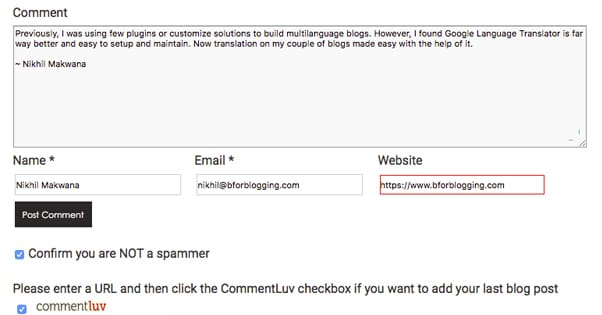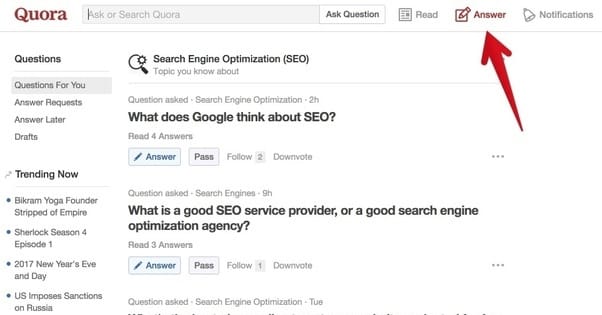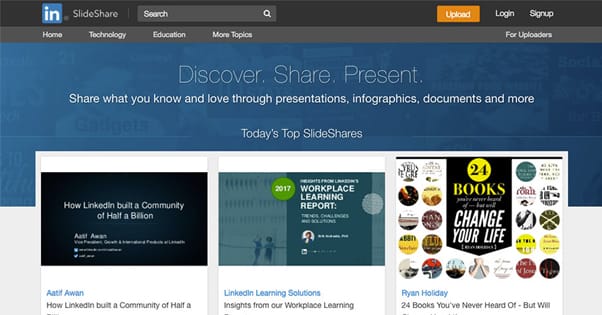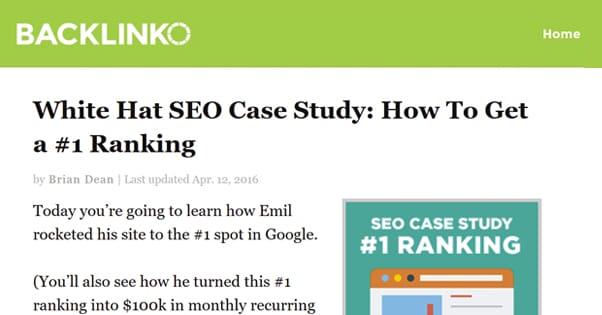15 Ways to Build Free Backlinks to Your Blog Posts
Published by James Parsons • Search Engine Optimization • Posted July 10, 2017 ContentPowered.com
ContentPowered.com
Time is money. When it comes to building a blog, or adding a blog for your business, you have to strike the right balance. Some people have a large enough profit margin to invest in services to help them grow and manage their blog. Others have to do it themselves.
When you’re looking for free sources of backlinks for a site, it generally means that you have a surplus of time and a dearth of money. When you can’t afford to pay someone to do it for you – or just pay for the results directly, as with PPC advertising – you have to spend your time.
I’ve tried to find a balance here between strategies that are effective and strategies that are time consuming. Obviously, you want to maximize the return on your investment. If one action takes half an hour and gets you a link, versus another that takes three days and gets you a similar link, you know which one you should go for.
The problem, of course, is that the best links don’t come cheap. A high quality link from a high quality site is going to take a lot of time and effort to obtain. Of course, the value of the link is higher as well, so there are a lot of elements you need to consider.
Link Sources to Avoid
There are a lot of different ways you can get links, and many of them fall into the gray or black hat territories. This means they can get you a link, but the strategy employed is either fraudulent, illegal, immoral, or just in violation of the terms of service of some site or another. Primarily, such techniques mean violating the search best practices that Google maintains, which in turn means the risk of that link is sky-high. In other words, you can get the link, but it’s highly likely that at some point Google will decide the link is spam and will remove the value the link may have had.
Here are some sources you might come across in articles like this one, but are traps for the naive or uninitiated.
- Site-wide links. If a site puts you in a sidebar or footer displayed on every page, that link isn’t going to be worth much or anything.
- Bulk links. If you’re going to a site like Fiverr and buying 100 links for $10, you’re getting a bunch of links on a bunch of WordPress sites the seller set up for that purpose, not real sites.
- Link exchanges. Any time you’re asked to enroll in a program where you publish a link in exchange for a link in return, it’s an unnatural link building scheme that Google will eventually discover and punish.
You get the idea; links should be natural votes of value from one site to another, not something you pay for or something you trade.
A Note on NoFollow
A lot of the sources of links I’m writing about will get you nofollowed links at least some of the time. There’s nothing wrong with a nofollowed link! Yes, the nofollow attribute means that Google doesn’t count the link as a link. As far as the index is concerned, it doesn’t exist. However, there are still all of the other benefits of the link, such as your brand mention, the people who can follow the link for traffic, the potential conversions you get out of it, and all the rest.
Besides; if you strive to ONLY get followed links, your backlink profile will look unnatural. It’s not as if the links don’t exist to Google; they just don’t count. Google can still see if you’re sculpting your link profile solely to impress their robots. My recommendation is to simply not worry about the followed status of the links you’re building.
Now, let’s get on with the specific strategies.
1. Broken Link Building
Broken link building is the process of taking advantage of the fact that websites move and die. Basically, you search your industry for websites that have resource pages full of links.
Look through those links for pages that no longer exist. Use the internet archive to see what was on the page, then create your own version of that content. Once it’s published, you can reach out to any site that linked to the old post – and now has a broken link – to inform them of it. “Hey, I see you’re linking to Page X on Your Page Here. The link is broken, but I have a good resource on the same topic on My Page, if you want to swap it out.”
You can read more about the tools and techniques that can make this process easier on Search Engine Land.
2. Insightful Blog Comments
Set up an RSS reader for the top blogs in your niche, and pay attention whenever they publish content. Read the content that you find most interesting and most relevant to your own business.
Your goal here is to find opportunities to comment on blog posts. Blog comment spam is a big problem, though, so you need to make sure your comments are insightful and valuable to readers. Add value, expand on a topic, ask a question, just provide utility.
The sooner you do this after a post is published, the higher on the page your comment is and the more prominent your name will be. This gives greater visibility to any links you include, as well as attracting the attention of the creator for a conversation.
3. Discussion Group Contributions
Discussion groups on Facebook and LinkedIn aren’t great sources of links for two reasons. First, they’re generally nofollowed, and social links aren’t super high value regardless.
4. Authority Answers on Quora
Quora is a question and answer site that tends to go two ways. Half of the site is interesting questions that are answered by industry insiders; things like “tell me about this aspect of working for Google” or “teach me about link building techniques you’ve used successfully.” The other half of the site is humor scenarios and fiction prompts; basically just an excuse for creative writers to put a few hundred words on paper to start their day.
Your goal is to take part in the first half. Set up a profile and fill out the information, particularly relating to who you are and why you’re an authority in your niche. Then go out and start looking for questions specifically in your niche. Answer them with as much detail as possible – basically write blog posts – and link to further reading on your site. Don’t make it a sales pitch, keep it as informational as possible. Quora answers, especially good ones, show up highly in Google search results, and having your answer on top gets you a lot of visibility.
5. Link To and Notify Influencers
Influencer marketing is a form of social engagement. You identify the important people in your niche, you try to engage with them, and you benefit when they interact with you or share your content.
One relatively simple strategy for doing this is simply appeal to their ego as an authority. Write a piece of content on your site, and when you do, make sure to link in context to a relevant piece of content the influencer produced. Once the content is published, take to Twitter or their social network of choice and let them know you linked to them. You can DM them, or you can publicly tag them in a message, it’s up to you.
You can read a whole lot more about the details of various types of influencer marketing in this excellent blog post on Kissmetrics.
6. Modify Content for Other Platforms
One piece of content does not have to remain one piece of content. You’d be surprised what you can do with it, actually.
Say you start with a single mid-length, reasonable quality blog post.
- Distill the post down to bullet points and create a slideshow. You can publish this on SlideShare.
- Record a vocal reading of the blog post. You can publish this as a podcast on whatever your favorite podcasting distribution platform is.
- Take the podcast and create an animation to go along with it. This can be your slide deck or a more animated film, or even just a video of you going over the points. Publish the video on YouTube and Facebook.
Now you have one piece of content turned into four pieces of content, published on five or more different sites. Add in shares and reposts of your content and you can see where the links add up.
7. Create Interesting Infographics
Another thing you can do with content is take that outline and your data, and convert it into an infographic. You can also go into graphic creation from scratch and harvest data on a particular interest. The main emphasis you need is something that is interesting and data-driven in a way that can be easily visualized. Tutorials can work, data displays can work, analysis can work, and trends can work, you just need to approach your graphic with a certain attention to the narrative.
Infographics are great link bait once they’re created. You can circulate them around in your industry, getting links each time. You can also turn it into a “guestographic”, which means you share the graphic with specific blogs and offer to write an accompanying blog post to go with it for that site. Free value for the site, free value for you.
8. Start an Industry Roundup Series
That influencer marketing thing? You can do that on a small, regular schedule every week or every month if you want. Make a top five or top ten list of the best blog posts you’ve seen in the month, and publish that list complete with links and reviews of the posts like clockwork. You link out to a lot of good people, many of whom appreciate the value of a link. Over time, many of them will start linking back to you when they write posts and recognize that you’ve written about the topic before. You earn links, can establish yourself as an authority based on your opinions and curation, and you build relationships with bloggers who appreciate your efforts.
9. Message Influencers for Interviews
Interviews are another great way to get some influencer marketing going. They also establish you as an authority. No one would answer you if you weren’t worth answering, right? And of course you’re worth answering because all these other people have answered in the past. It builds upon itself.
There are two styles of interview you can go with. The single in-depth interview is a longer chat with a single influencer. You come up with a series of questions to ask them and simply have a conversation that you transcribe later.
The other style is the single question interview. Come up with one potent question, something like “What’s your most effective way of marketing using podcasts?” Then send that question out to a list of 100 influencers, with the expectation that maybe a third of them will respond, and you then build your article based around those responses. You link out to them in your bio for each of them, and many of them ideally link back.
10. Create Flagship Resources
Writing something incredibly good can earn a lot of links. There’s not really a lot more detail to that, right? Just create something extremely good, something that everyone wants to link to because it’s the foremost resource on the topic available. If you can’t figure out what to cover, just look for topics you’ve wanted to research but haven’t found a good resource for.
11. Contribute to or Sponsor Events
Many events have websites of their own. When you contribute to an event or sponsor it financially, they will often give you a link on the site as part of a list of contributors. It might not be a great link, but hey, not every link can be the best.
12. Dig Deep with a Case Study
People love data. Well, marketers love data. People in general have a pretty bad awareness of numbers and what they mean.
Case studies are excellent because you can take data and draw conclusions from them. Some people will use it as a resource and will link to it as a source. Other people will present their own data as a counter-argument, or as supplement to make your argument stronger. Plus, a good case study can be repeated every year to show change and trends.
13. Run a Broad Industry Survey
Industry surveys can be an excellent source of links for years to come. Choose a subject and do your best to create worthwhile questions. Send out the survey to as many brands and businesses in your industry as you can, then tally up the results and publish the data once you’ve gotten the responses back. The resulting source of data can be used as the foundation for literally hundreds or thousands of blog posts in the coming year or two, so it can be hugely worthwhile.
14. Write Testimonials for Trusted Services
Think about all of the products and services your business uses from day to day, week to week, and month to month. The ones you’re most satisfied with or find most useful, visit their website. Do they have user testimonials in prominent positions when they’re trying to sell their product? If so, reach out to them and ask how you can submit one. They’ll be more than happy to have another testimonial to help them sell, and you’ll have a link and reference.
15. Submit Resources for EDU Websites
EDU pages aren’t inherently more valuable than other websites, but since the .edu domain is restricted, the quality of the sites on those domains tends to be higher and thus more valuable. Your goal is to create a resource that a school can use, and reach out to submit it to whoever manages their website. If you’re lucky, they will link to your resource because it can be genuinely helpful to their students, and it gives you a nice, high quality link.














All of the points are really helpful. But, I want to know, is it necessary to create backlinks for every blog post?